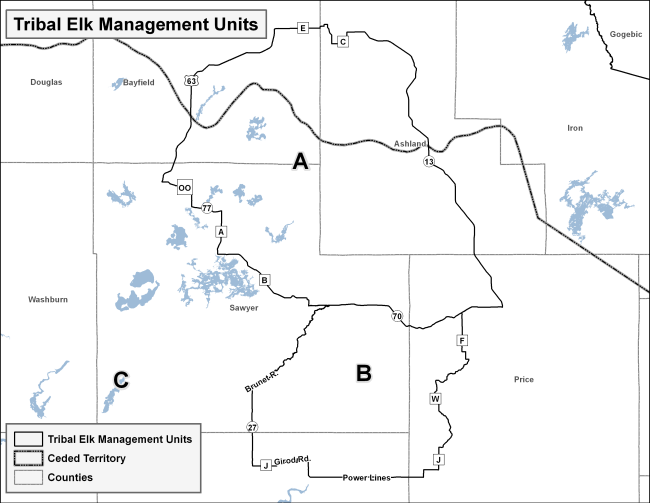Seasonal omashkooz (elk) hunting regulations and information.
In addition to general harvest regulations, the following regulations apply during the treaty elk hunting season in the Wisconsin Ceded Territories.
Elk are a protected species in Minnesota and may not be hunted.
This page does not detail harvest regulations in their entirety. Additionally, your Tribe may have more restrictive regulations. Check with your Tribe for their full code of regulations.
Wisconsin 1837 and 1842 Ceded Territories
- Day after Labor Day through the first Sunday following New Year's Day
- 1/2 hour before sunrise to 20 minutes after sunset
Elk may not be hunted in Minnesota.

The number of elk available for harvest (tribal quota) is determined on an annual basis. A limited number of elk harvest permits are available in any given year. No member may hunt elk without possessing a valid permit and a valid carcass tag. Your Band’s conservation department may have specific procedures in place governing allocation of these permits. Consult with your Band’s conservation department well in advance of the elk hunting season to determine how to apply for a permit.
If your Band has approved commercial elk hunting, special rules apply; contact your Band’s conservation department, registration station, or GLIFWC.
Members must follow all weapon and area restrictions included in their Tribe's code.
Tagging and registration provisions apply to subsistence elk hunting only.
Members must have a valid carcass tag while hunting elk and must attach the carcass tag immediately upon harvest.
Members must register elk in-person and must make the carcass available for any required biological testing at a tribal registration station or in the field with a tribal or GLIFWC warden by 5:00 pm the next calendar day after harvest.
Members must provide the registration official with the sex of the elk harvested, management unit/zone where the elk was harvested, date of harvest, and the Tribal ID of the harvester and any other relevant information.